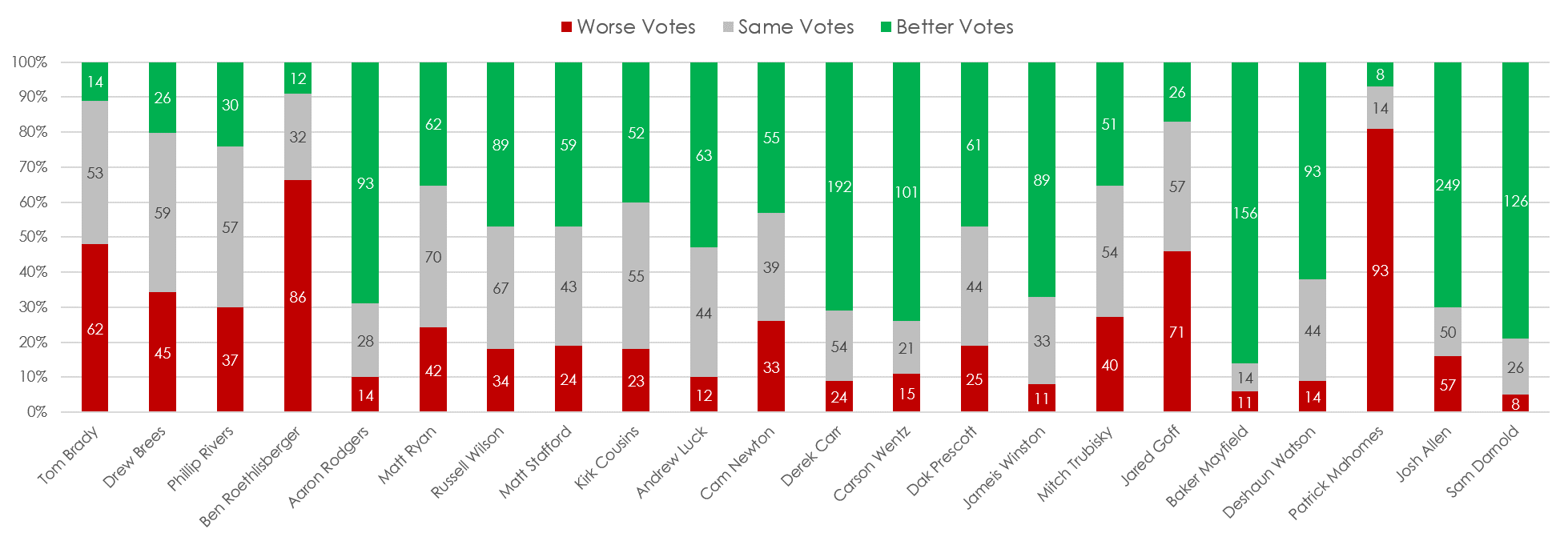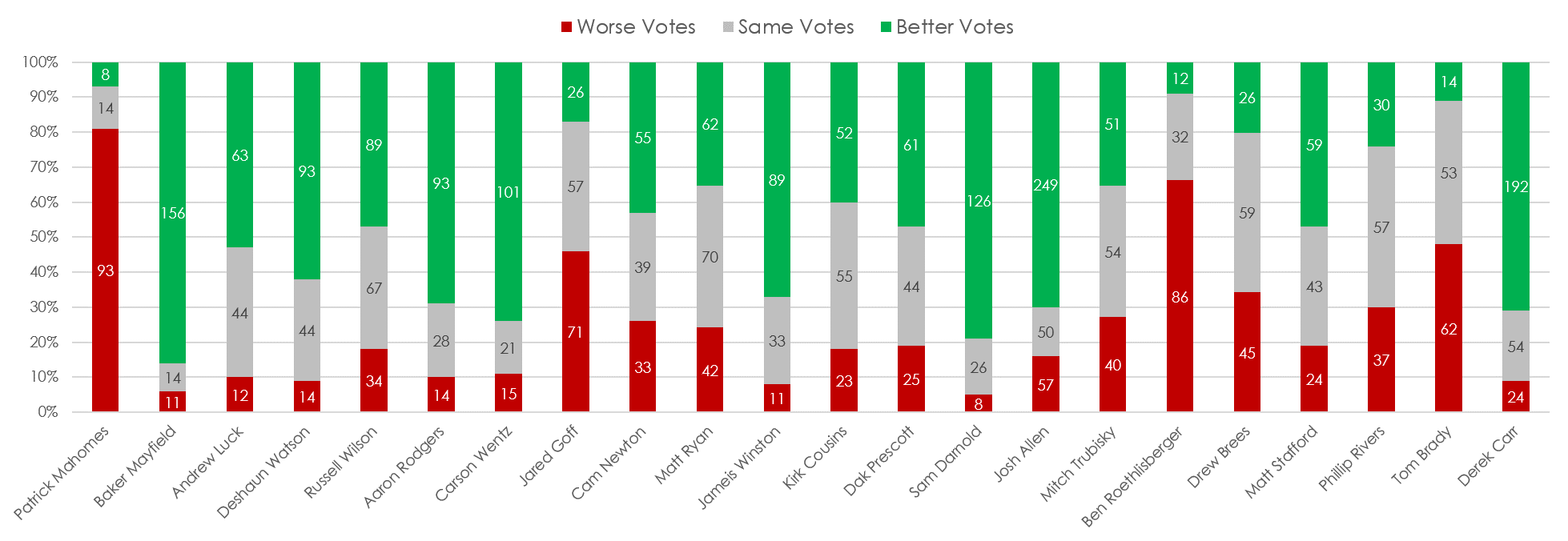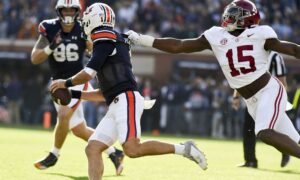Off-Season Optimism: Quarterback Hopes and Dreams
For a sports fan hailing from a country outside the US, one of the best things about the NFL is that it gives hope to every single team that this year could just be their year. The draft and salary cap combine to mean that a rebuild can happen rapidly and all through the off-season, every team dreams that they could be far, far better than they were a year ago.
This hope also seeps into the world of dynasty leagues. Even when we’re coming off a season when our team floundered and was clearly not good enough, we spend the off-season looking at our assets and seeing a much-improved team. All our draft picks will work out beautifully. All the injured players will remain healthy and every player whose situation changed is going to benefit.
We even go a step further. The football industry and Twitter, in particular, is full of theories and data and stats that show exactly why any player you can name is about to improve drastically. The problem is – a lot of it just isn’t true. This isn’t news. We know that some players improve, and some deteriorate. It’s just that we like to believe the ones we own are in the former camp and the ones we don’t own are in the latter.
In a bid to understand and evaluate what that confidence looks like, I ran 22 separate surveys on Twitter about quarterbacks – simply asking whether the player in question would score more, the same or fewer fantasy points in 2019 than they did in 2018. The results were illuminating.
Overall positivity
This chart shows the overall distribution of votes:

Out of the 3,446 votes, 1,708 (50%) were for the QB to score more points than last year. 958 (28%) were for staying the same. 780 (23%) votes were for the player to get worse YoY.
This is the first red flag. Clearly, not all players get better every year, but the dynasty world is convinced that their particular favorite will.
Sorted by positivity
Here’s the result for the surveys sorted by positive votes:

The players on the left received the highest number of people thinking they would improve. The list is led by rookies with Baker Mayfield, Sam Darnold, and Josh Allen all in the top five.
Carson Wentz and Jameis Winston are also still young players. Winston is only a year and a half older than Mahomes.
Rounding out the most positive players are Derek Carr (who people are surprisingly positive about) and Aaron Rodgers.
On the right-hand side are the players most expected to have a relatively poor 2019.
Patrick Mahomes leads the way with most football fans cognizant of the fact that his once-in-a-career 2018 is unlikely to be repeated. Similarly, Jared Goff has people worried, given how good 2018 was. Maybe the Rams’ Super Bowl performance is still fresh in their minds.
The other obvious factor is age here with Ben Roethlisberger (37) and Tom Brady (41) expected to drop a little at least.
Sorted by age

This is the same data with the older players on the left and younger on the right. The relationship isn’t as clear as it could be here but still, you can see that mainly the older players are expected to drop (Aaron Rodgers is the exception) and the younger players improve (aside from Mahomes and maybe Goff).
This makes sense but, in an era when QBs can clearly play later than ever before (Brady and Drew Brees have both been MVP candidates past 40) it seems a little simplistic suggesting that there might still be bargains to be had on those players.
Sorted by ADP

Here the players with the highest ADP are on the left and lowest ADP on the right. Mahomes is a true exception given how far ahead of everyone he was in 2018 but aside from him all the players on the left are very positively viewed ones. This makes sense. Players the public thinks will get better are worth more and therefore drafted earlier.
There are some obvious trends.
- As a community, we expect far too many players to improve. This is alarmingly true every year. You’d think we’d learn.
- Older players are more expected to drop year on year – because dynasty is still ageist.
- Younger players (and last year’s rookies in particular) are expected to get better. We still hold on to this idea that players just predictably improve every year.
But there are also some interesting outliers and lessons here.
Tom Brady, QB NE
Drew Brees, QB NO
Brady had just 48% “worse” votes and Brees 34%. But in the context of overwhelming optimism, these seem relatively low with just 11% and 20% expecting them to improve. There’s an obvious reason – given they’re in their 40s people just expect a decline to kick in any time.
Aaron Rodgers, QB GB
Rodgers is 35 years old (only a year younger than Roethlisberger) but given his reputation and ability, the public doesn’t really seem to view him as a regression candidate on account of his age. Not yet anyway. In fact, a very high 69% of people think he’ll get better.
Given he threw for 4,442 yards (his best since 2011), 25 TDs and just two INTs, this seems a little unlikely.
Derek Carr, QB OAK
With 71% of votes expecting him to improve, Carr was the most optimistic of all players (aside from younger QBs).
This seems odd. He threw for over 4,000 yards last year for the first time. And his ten INTs were the second lowest of his career. His TDs admittedly were low and that could change but the expected improvement must be put down to Antonio Brown. A receiver of that caliber could absolutely raise Carr’s game, but it still seems a very high % expecting him to get better.
Jared Goff, QB LAR
Just 17% of voters expect Goff to improve. Clearly after a season when he led a magical offense to the Super Bowl, getting better is a tall order. But Goff ‘only’ threw 32 TDs and the whole team is still in place around him. Alongside the hottest young coach in football. 46% of votes expecting him to decline seems harsh.
- Ten IDP Fantasy Football Stats You Need to Know after Week 16 - December 29, 2023
- Ten IDP Fantasy Football Stats You Need to Know after Week 15 - December 22, 2023
- Ten IDP Fantasy Football Stats You Need to Know after Week 14 - December 14, 2023


































































